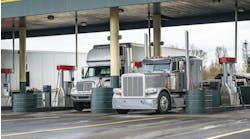Sales and marketing do not happen in a vacuum. It would be so much easier if all salespeople had to worry about was knowing their prospects’ business, understanding their competitors’ offering and being able to articulate the features, advantages and benefits of their own products.
The reality is that the sales and marketing process is subjected to the influences of many outside factors, according to Michael Caceci of Excellerated Performance, LLC. Speaking at a recent NationaLease meeting, he shared information about factors affecting sales and why having a process in place improves your chance of sales success. In a previous blog, I shared Caceci’s thoughts on the importance of knowledge, skills and attitude in the sales equation.
Here is his list of the things that impact sales and marketing:
- Business goals — This includes both your company’s and your prospect’s goals. Make sure you understand them.
- Changing customer requirements — No successful business remains static. Changes in your customer’s business can alter their equipment and maintenance needs.
- Legal and political changes — While there are always changes in the legal and political landscape, when there is a change in administration those changes are likely to come fast and furious.
- Risk and compliance — Customers’ risks can change as can conditions for being in compliance.
- Regulatory change — The ELD mandate is a perfect example of a new regulation that has and will continue to have big repercussions in the trucking industry.
- Competitive forces — New competitors enter the market fairly regularly and old ones fall by the wayside.
- Internet and social media — Do not underestimate the impact of social media. Reputations are made and lost quickly.
- Technological changes — Autonomous trucks, platooning, advanced safety systems, blockchain, and additive manufacturing are just a few of the technologies currently at play in the trucking industry.
- Workforce changes — The need for both drivers and technicians has resulted in fleets looking outside of traditional demographics for employees. Be aware of generational and cultural differences.
In order to effectively manage all these influences, you need to have a sales process in place. While there is no one right answer as to what process is right for your operation, here are some questions you need to ask yourself about your sales process.
- Are your sales and marketing processes documented?
- Are processes reviewed for efficiency and effectiveness?
- Do you have a CRM system in place to support sales and marketing processes?
- Do sales reps follow a consistent buying/selling process for every sales opportunity?
- Does your process track every sales opportunity?
- Do you track sales activities and correlate activities with business results?
- Do you continuously improve the process?
The answer to all of the above questions is “yes.” If you are not documenting, monitoring and refining your sales process you run the risk of losing sales to your competitors who are doing just that.
Given all the factors that come into play during the sales process, having a well defined sales process in place should give your sales staff the confidence they need to close deals.


